 W
WAfter Babel: Aspects of Language and Translation is a linguistics book by literary critic George Steiner, in which the author deals with the "Babel problem" of multiple languages.
 W
WSibawayh, whose full name is Abu Bishr Amr ibn Uthman ibn Qanbar al-Basri, was a Persian leading grammarian of Basra and author of the earliest book on Arabic grammar and linguistics. His famous unnamed work, referred to as Al-Kitāb, or "The Book", is a five-volume seminal discussion of the Arabic language.
 W
WAlphabet to E-mail: How Written English Evolved and Where It's Heading (ISBN 0-415-18685-4) is a book by linguist Dr. Naomi Baron, a professor of Linguistics at American University, Washington, D.C.. It was first published in 2000, published by Routledge Press.
 W
WThe American Language; An Inquiry into the Development of English in the United States, first published in 1919, is H. L. Mencken's book about the English language as spoken in the United States.
 W
WAuraicept na n-Éces was historically thought to be a 7th-century work of Irish grammarians, written by a scholar named Longarad. The core of the text may date to the mid-7th century, but much material was added between that date and the production of the earliest surviving copy in the 12th century.
 W
WAzari or the Ancient Language of Azerbaijan is a treatise written by the Iranian scholar Ahmad Kasravi in 1925, about the history of the Azeri language. This book has been approved by orientalists. In this book, Kasravi, using numerous documents and manuscripts, argues that the Old Azeri language should not be categorized as a member of the Turkic languages, but as an Iranian language, a descendant of the Median language.
 W
WBasic Color Terms: Their Universality and Evolution is a book by Brent Berlin and Paul Kay. Berlin and Kay's work proposed that the basic color terms in a culture, such as black, brown, or red, are predictable by the number of color terms the culture has. All cultures have terms for black/dark and white/bright. If a culture has three color terms, the third is red. If a culture has four, it has either yellow or green.
 W
WBefore the Dawn: Recovering the Lost History of Our Ancestors is a non-fiction book by Nicholas Wade, a science reporter for The New York Times. It was published in 2006 by the Penguin Group. By drawing upon research on the human genome, the book attempts to piece together what Wade calls "two vanished periods": the five million years of human evolution from the development of bipedalism leading up to behavioural modernity around 50,000 years ago, and the 45,000 subsequent years of prehistory.
 W
WThe term Cartesian linguistics was coined with the publication of Cartesian Linguistics: A Chapter in the History of Rationalist Thought (1966), a book on linguistics by Noam Chomsky. The word "Cartesian" is the adjective pertaining to René Descartes, a prominent 17th-century philosopher. However, rather than confine himself to the works of Descartes, Chomsky surveys other authors interested in rationalist thought. In particular, Chomsky discusses the Port-Royal Grammar (1660), a book which foreshadows some of his own ideas concerning universal grammar.
 W
WThe Chinese Language: Fact and Fantasy is a book written by John DeFrancis, published in 1984 by University of Hawaii Press. The book describes some of the concepts underlying the Chinese language and writing system, and gives the author's position on a number of ideas about the language.
 W
WCourse in General Linguistics is a book compiled by Charles Bally and Albert Sechehaye from notes on lectures given by Ferdinand de Saussure at the University of Geneva between 1906 and 1911. It was published in 1916, after Saussure's death, and is generally regarded as the starting point of structural linguistics, an approach to linguistics that flourished in Europe and the United States in the first half of the 20th century. One of Saussure's translators, Roy Harris, summarized Saussure's contribution to linguistics and the study of language in the following way:Language is no longer regarded as peripheral to our grasp of the world we live in, but as central to it. Words are not mere vocal labels or communicational adjuncts superimposed upon an already given order of things. They are collective products of social interaction, essential instruments through which human beings constitute and articulate their world. This typically twentieth-century view of language has profoundly influenced developments throughout the whole range of human sciences. It is particularly marked in linguistics, philosophy, psychology, sociology and anthropology".
 W
WCurrent Issues in Linguistic Theory is a 1964 book by American linguist Noam Chomsky. It is a revised and expanded version of "The Logical Basis of Linguistic Theory", a paper that Chomsky presented in the ninth International Congress of Linguists held in Cambridge, Massachusetts in 1962. It is a short monograph of about a hundred pages, similar to Chomsky's earlier Syntactic Structures (1957). In Aspects of the Theory of Syntax (1965), Chomsky presents many of its ideas in a more elaborate manner.
 W
WDe vulgari eloquentia "on vernacular eloquence" is the title of a Latin essay by Dante Alighieri. Although meant to consist of four books, it abruptly terminates in the middle of the second one. It was probably composed shortly after Dante went into exile, circa 1302-1305.
 W
WEbonics: The True Language of Black Folks is a 1975 book written by the American psychologist Robert Williams. Williams coined the term Ebonics two years earlier at a conference he organized on the topic of the "cognitive and language development of the African American child". This book defines the term as the "linguistic and para-linguistic features which on a concentric continuum represent the communicative competence of the West African, Caribbean, and United States slave descendants of African origin".
 W
WEducating Eve: The 'Language Instinct' Debate is a book by Geoffrey Sampson, providing arguments against Noam Chomsky's theory of a human instinct for (first) language acquisition. Sampson explains the original title of the book as a deliberate allusion to Educating Rita (1980), and uses the plot of that play to illustrate his argument. Sampson's book is a response to Steven Pinker's The Language Instinct specifically and Chomskyan linguistic nativism broadly.
 W
WThe Erotemata (Ἐρωτήματα) are the first printed basic Greek grammar in use in Western Europe, written by Manuel Chrysoloras who was a pioneer is spreading Greek literature in Western Europe.
 W
WA History of the Pyu Alphabet is a book on the Pyu language first published in 1963 by Tha Myat.
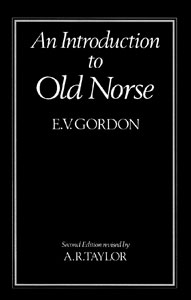 W
WAn Introduction to Old Norse is a textbook written by E. V. Gordon, arising from his teaching at the University of Leeds and first published in 1927 in Oxford at The Clarendon Press. The Second Edition was revised (1957) by A. R. Taylor, Gordon's former student and, indirectly, his Leeds successor. It was most recently reprinted in 1990 by the Oxford University Press. According to Todd Krause of the Linguistics Research Centre at the University of Texas, the work is “still considered the standard reference, though often extremely daunting for self-study”.
 W
WA Key into the Language of America or An help to the Language of the Natives in that part of America called New England) is a book written by Roger Williams in 1643 describing the Native American languages in New England in the 17th century, largely Narragansett, an Algonquian language. The book is the first published colonial study of an Native American language in English.
 W
WKnowledge of Language: Its Nature, Origin, and Use is a book by American linguist Noam Chomsky, first published in 1986. In this book, Chomsky deals with topics in the philosophy of language and the philosophy of mind. He argues that the study of linguistic structures provides insight into the workings of human mind.
 W
WLanguage and Mind is a 1968 book of three essays on linguistics by Noam Chomsky. An expanded edition in 1972 added three essays and a new preface.
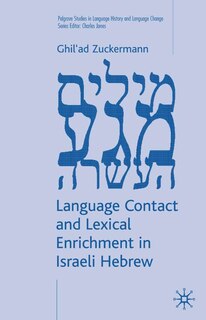 W
WLanguage Contact and Lexical Enrichment in Israeli Hebrew is a scholarly book written in the English language by linguist Ghil'ad Zuckermann, published in 2003 by Palgrave Macmillan. The book proposes a socio-philological framework for the analysis of "camouflaged borrowing" such as phono-semantic matching. It introduces for the first time a classification for "multisourced neologisms", new words that are based on two or more sources at the same time.
 W
WThe Language Instinct is a 1994 book by Steven Pinker, written for a general audience. Pinker argues that humans are born with an innate capacity for language. He deals sympathetically with Noam Chomsky's claim that all human language shows evidence of a universal grammar, but dissents from Chomsky's skepticism that evolutionary theory can explain the human language instinct.
 W
WThe Languages of Africa is a 1963 book of essays by the linguist Joseph Greenberg, in which the author sets forth a genetic classification of African languages that, with some changes, continues to be the most commonly used one today. It is an expanded and extensively revised version of his 1955 work Studies in African Linguistic Classification, which was itself a compilation of eight articles which Greenberg had published in the Southwestern Journal of Anthropology between 1949 and 1954. It was first published in 1963 as Part II of the International Journal of American Linguistics, Vol. 29, No. 1; however, its second edition of 1966, in which it was published as an independent work, is more commonly cited.
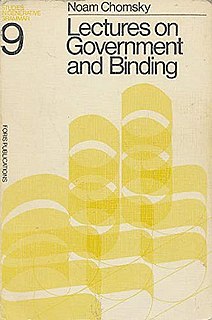 W
WLectures on Government and Binding: The Pisa Lectures (LGB) is a book by American linguist Noam Chomsky, published in 1981. It is based on the lectures Chomsky gave at the GLOW conference and workshop held at the Scuola Normale Superiore in Pisa, Italy in 1979. In this book, Chomsky presented his government and binding theory of syntax. It had great influence on the syntactic research in early 1980s, especially among the linguists working within the transformational grammar framework.
 W
WThe Lexicon of Comicana is a 1980 book by the American cartoonist Mort Walker. It was intended as a tongue-in-cheek look at the devices used by comics cartoonists. In it, Walker invented an international set of symbols called symbolia after researching cartoons around the world. In 1964, Walker had written an article called "Let's Get Down to Grawlixes", a satirical piece for the National Cartoonists Society. He used terms such as grawlixes for his own amusement, but they soon began to catch on and acquired an unexpected validity. The Lexicon was written in response to this.
 W
WLinguistic Imperialism is a book written by Robert Phillipson, research professor at Copenhagen Business School's Department of English, published in 1992 by Oxford University Press.
 W
WMade in America is a nonfiction book by Bill Bryson describing the history of the English language in the United States and the evolution of American culture.
 W
WThe Meaning of Meaning: A Study of the Influence of Language upon Thought and of the Science of Symbolism (1923) is a book by C. K. Ogden and I. A. Richards. It is accompanied by two supplementary essays by Bronisław Malinowski and F. G. Crookshank. The conception of the book arose during a two-hour conversation between Ogden and Richards held on a staircase in a house next to the Cavendish Laboratories at 11 pm on Armistice Day, 1918.
 W
WMiscellaneous Babylonian Inscriptions is a 1918, Sumerian linguistics and mythology book written by George Aaron Barton.
 W
WConrad Gessner was a Swiss physician, naturalist, bibliographer, and philologist. Born into a poor family in Zürich, Switzerland, his father and teachers quickly realised his talents and supported him through university, where he studied classical languages, theology and medicine. He became Zürich's City Physician, but was able to spend much of his time on collecting, research and writing. Gessner compiled monumental works on bibliography and zoology and was working on a major botanical text at the time of his death from plague at the age of 49. He is regarded as the father of modern scientific bibliography, zoology and botany. He was frequently the first to describe species of plants or animals in Europe, such as the tulip in 1559. A number of plants and animals have been named after him.
 W
WModality is a non-fiction book by the semanticist Paul Portner. The book, first published by the Oxford University Press in 2009, lays out the basic problems in linguistic modality and some of the standard approaches to solving them.
 W
WThe Mother Tongue (ISBN 0-380-71543-0) is a book by Bill Bryson which compiles the history and origins of the English language and its various quirks. It is subtitled English And How It Got That Way. The book discusses the Indo-European origins of English, the growing status of English as a global language, the complex etymology of English words, the dialects of English, spelling reform, prescriptive grammar, and more minor topics including swearing. This account popularises the subject and makes it accessible to the lay reader, but it has been criticised for some inaccuracies, such as the perpetuation of several urban myths.
 W
WA Mouthful of Air: Language and Languages, Especially English is a book on linguistics by Anthony Burgess published in 1992.
 W
WDe orthographia bohemica is a Latin work published between 1406 and 1412. It is attributed to Charles University rector and reformer Jan Hus. The book codified the Czech language's modern spelling and orthography and had decisive impact on the orthography of a number of other European languages.
 W
WPollomuhku ja Posityyhtynen is a 2008 fact book by the Finnish translator of the Harry Potter books, Jaana Kapari-Jatta.
 W
WReflections on Language is a 1975 book in which MIT linguist Noam Chomsky argues for a rationalist approach to human nature. Under this approach, specific capabilities are innate to humans, as opposed to an empiricist approach in which there is no innate human nature but rather a "blank slate" upon which psychological and social forces act. The New York Times selected the book as among the year's best.
 W
WRevivalistics: From the Genesis of Israeli to Language Reclamation in Australia and Beyond is a scholarly book written by linguist and revivalist Ghil'ad Zuckermann. It was published in 2020 by Oxford University Press. The book introduces revivalistics, a trans-disciplinary field of enquiry exploring "the dynamics and problematics inherent in spoken language reclamation, revitalization, and reinvigoration".
 W
WLa ricerca della lingua perfetta nella cultura europea is a 1993 book by Umberto Eco about attempts to devise an ideal language. The writing is essayistic and uses the myth of Babel as a paradigm for connecting linguistic and social practices. Emphasizing that the quest for a perfect language has never been devoid of ideological motivation, Eco outlines some objections to the idea and suggests that an International Auxiliary Language, such as Esperanto, is a more realistic project. He points out that the impossible quest has had some useful side effects but dwells mostly on exotic proposals. Lengthy passages are devoted to Dante, Lull, Kircher, various 17th century authors and a few less well-known names from later times. The contemporary project for a politically and culturally unified Europe provides the perspective for a more serious consideration of the theme.
 W
WRoger's Profanisaurus is a humorous book published in the United Kingdom by Dennis Publishing which is written in the style of a lexicon of profane words and expressions. The book is marketed as "the foulest-mouthed book ever to stalk the face of the earth".
 W
WThe Sacred Mushroom and the Cross: A Study of the Nature and Origins of Christianity Within the Fertility Cults of the Ancient Near East is a 1970 book about the linguistics of early Christianity and fertility cults in the Ancient Near East. It was written by John Marco Allegro (1923–1988).
 W
WSerendipities: Language and Lunacy is a 1998 collection of essays by Umberto Eco. Dealing with the history of linguistics and Early Modern concepts of a perfect language, the material in the book overlaps with La ricerca della lingua perfetta. As Eco explains it in his preface, serendipity is the positive outcome of some ill-conceived idea.
 W
WThe Sound Pattern of English is a 1968 work on phonology by Noam Chomsky and Morris Halle. It presents a view of the phonology of English, and has been very influential in both the field of phonology and in the analysis of the English language. Chomsky and Halle present a view of phonology as a linguistic subsystem, separate from other components of the grammar, that transforms an underlying phonemic sequence according to rules and produces as its output the phonetic form that is uttered by a speaker. The theory fits with the rest of Chomsky's early theories of language in the sense that it is transformational; as such it serves as a landmark in Chomsky's theories by adding a clearly articulated theory of phonology to his previous work which focused on syntax.
 W
WThe Sounds of the World's Languages, sometimes abbreviated SOWL, is a 1996 book by Peter Ladefoged and Ian Maddieson which documents a global survey of the sound patterns of natural languages. Drawing from the authors' own fieldwork and experiments as well as existing literature, it provides an articulatory and acoustic description of vowels and consonants from more than 300 languages. It is a prominent reference work in the field of phonetics.
 W
WThe Stories of English is a 2004 book by British linguist David Crystal; it traces the history of the English language from the invasion of Great Britain by the Angles and Saxons in the 5th Century to the modern splintering of the language into its modern British, American, Indian, Australian, and other dialects.
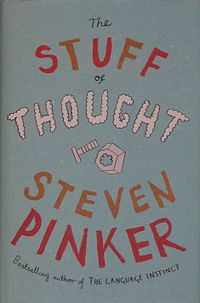 W
WThe Stuff of Thought: Language As a Window Into Human Nature is a 2007 book by experimental psychologist Steven Pinker. In the book Pinker "analyzes how our words relate to thoughts and to the world around us and reveals what this tells us about ourselves". Put another way, Pinker "probes the mystery of human nature by examining how we use words". The book became a New York Times best seller.
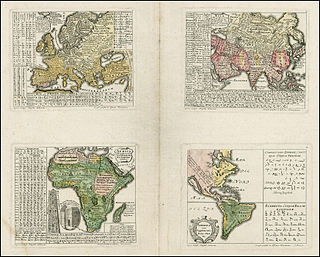 W
WSynopsis Universae Philologiae is an early work on comparative linguistics by Gottfried Hensel, a rector in Hirschberg, Lower Silesia. Its full title reads: Synopsis universae philologiae: in qua: miranda unitas et harmonia linguarum totius orbis terrarum occulta, e literarum, syllabarum, vocumque natura & recessibus eruitur. Cum Grammatica, LL. Orient. Harmonica, Synoptice tractata; nec non descriptione Orbis Terr. quoad Linguarum situm & propagationem, mappisque geographico-polyglottis. It was published in 1741 in Nuremberg by commission of the Homann heirs company. A second edition appeared in 1754.
 W
WThe Instruction of Imagination: Language as a Social Communication Technology is a 2015 book by Daniel Dor. In it, Dor proposes a new theoretical characterization of language as a social communication technology, collectively constructed for the specific function of the instruction of imagination. It makes four foundational arguments:Language is social: it is a property of the social network, and the product of a collective process of invention and development. It resides between speakers, not in them, at a level of organization and complexity that transcends the individual mind. Language is a communication technology: it develops, propagates and changes like other communication technologies humans have invented, such as the book, fax, telephone, and social media. Its modus operandi is best analyzed in technological terms. Language is designed for the specific function of the instruction of imagination: unlike other systems of communication, language allows speakers to instruct their interlocutors in the process of imagining the intended experience. Language is collectively constructed through the continuous process of experiential mutual-identification for language: in the process, individuals systematically isolate and highlight points of commonalities between their experiences, formally mark thems, and develop mutually-identified prescriptive norms for their use as instructions for imagination.
 W
WLe Ton beau de Marot: In Praise of the Music of Language is a 1997 book by Douglas Hofstadter in which he explores the meaning, strengths, failings and beauty of translation. The book is a long and detailed examination of one short translation of a minor French poem and, through that, an examination of the mysteries of translation itself. Hofstadter himself refers to it as "my ruminations on the art of translation".
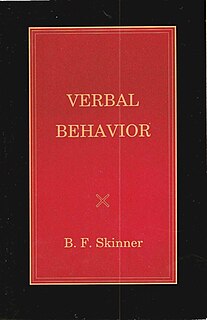 W
WVerbal Behavior is a 1957 book by psychologist B. F. Skinner, in which he describes what he calls verbal behavior, or what was traditionally called linguistics. Skinner's work describes the controlling elements of verbal behavior with terminology invented for the analysis - echoics, mands, tacts, autoclitics and others - as well as carefully defined uses of ordinary terms such as audience.
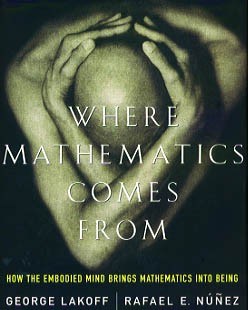 W
WWhere Mathematics Comes From: How the Embodied Mind Brings Mathematics into Being is a book by George Lakoff, a cognitive linguist, and Rafael E. Núñez, a psychologist. Published in 2000, WMCF seeks to found a cognitive science of mathematics, a theory of embodied mathematics based on conceptual metaphor.
 W
WWomen, Fire, and Dangerous Things: What Categories Reveal About the Mind is a non-fiction book by the cognitive linguist George Lakoff. The book, first published by the University of Chicago Press in 1987, puts forward a model of cognition argued on the basis of semantics. The book emphasizes the centrality of metaphor, defined as the mapping of cognitive structures from one domain onto another, in the cognitive process. Women, Fire, and Dangerous Things explores the effects of cognitive metaphors, both culturally specific and human-universal, on the grammar per se of several languages, and the evidence of the limitations of the classical logical-positivist or Anglo-American School philosophical concept of the category usually used to explain or describe the scientific method.
 W
WYou Just Don't Understand: Women and Men in Conversation is a 1990 non-fiction book on language and gender by Deborah Tannen, a professor of sociolinguistics at Georgetown University. It draws partly on academic research by Tannen and others, but was regarded by academics with some controversy upon its release. It was written for a popular audience, and uses anecdotes from literature and the lives of Tannen and her family, students and friends.